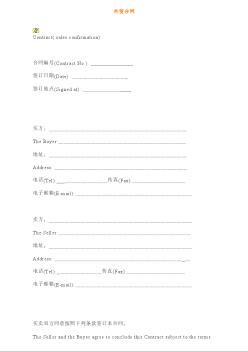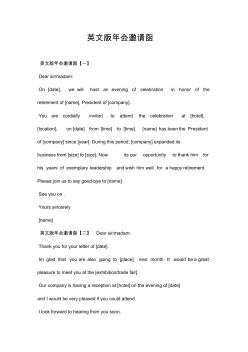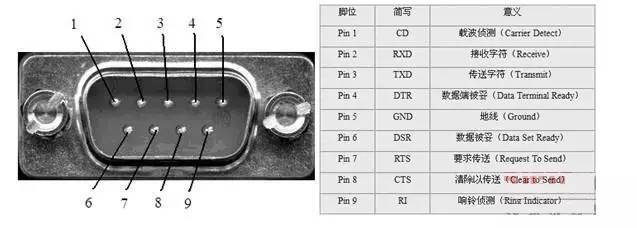通信原理(英文版)(第2版)
通信原理(英文版)(第2版)基本信息
| 书 名 | 通信原理(英文版)(第2版) | 作 者 | 樊昌信 |
|---|---|---|---|
| 出版社 | 电子工业出版社 | 出版时间 | 2015年8月 |
| 页 数 | 432 页 | 定 价 | 69 元 |
| 开 本 | 16 开 | ISBN | 9787121264238 |
PARTⅠ
Chapter 1Introduction
11Historical Review of Communication
12Message,Information,and Signal
13Digital Communication
131Basic Concept
132Advantages of Digital Communication
133Digital Communication System Model
134Specifications of Digital Communication System
14Channel
141Wireless Channel
142Wired Channel
143Channel Models
144Influence of Channel Characteristics on Signal Transmission
15Noise in Channel
16Brief Summary
Questions
Exercises
Chapter 2Signals
21Classification of Signals
22Characteristics of Deterministic Signals
221Characteristics in Frequency Domain
222Characteristis in Time Domain
23Characteristics of Random Signals
231Probability Distribution of Random Variable
232Probability Density of Random Variable
24Examples of Frequently Used Random Variables
25Numerical Characteristics of Random Variable
251Mathematical Expectation
252Variance
253Moment
26Random Process
261Basic Concept of Random Process
262Stationary Random Process
263Ergodicity
264Autocorrelation Function and Power Spectral Density of Stationary Random Process
27Gaussian Process
28Narrow Band Random Process
281Basic Concept of Narrow Band Random Process
282Characteristics of Narrow Band Random Process
29Sinusoidal Wave plus Narrow Band Gaussian Process
210Signal Transfer through Linear Systems
2101Basic Concept of Linear Systems
2102Deterministic Signal Transfer through Linear Systems
2103Random Signal Transfer through Linear Systems
211Brief Summary
Questions
Exercises
Chapter 3Analog Modulation System
31Introduction
32Linear Modulation
321Amplitude Modulation (AM)
322Doublesideband Modulation (DSB)
323SingleSideband Modulation (SSB)
324Vestigial Sideband Modulation (VSB)
33Nonlinear Modulation
331Basic Principles
332Frequency Spectrum and Bandwidth of Modulated Signal
333Reception of Angular Modulated Signal
34Brief Summary
Questions
Exercises
Chapter 4Digitization of Analog Signal
41Introduction
42Sampling of Analog Signal
421Sampling of LowPass Analog Signal
422Sampling of BandPass Analog Signal
423Analog Pulse Modulation
43Quantization of Sampled Signal
431Principles of Quantization
432Uniform Quantization
433Nonuniform Quantization
44Pulse Code Modulation
441Basic Principles of Pulse Code Modulation
442Natural Binary Code and Fold Binary Code
443Quantization Noise in PCM System
45Differential Pulse Code Modulation
451Principles of Differential Pulse Code Modulation
452Quantization Noise and Signal to Quantization Noise Ratio in DPCM System
46Delta Modulation
461Principles of Delta Modulation
462Quantization Noise in Delta Modulation System
47Brief Summary
Questions
Exercises
Chapter 5Representation and Transmission of Baseband Digital Signal
51Introduction
52Coding Method of Character
53Waveform of Baseband Digital Signal
54Symbol Code Types of Baseband Digital Signals for Transmission
55Frequency Characteristic of Baseband Digital Signal
551Calculation of Power Spectral Density of vc(t)
552Calculation of Power Spectral Density of uc(t)
553Calculation of Power Spectral Density of s(t)
554Examples of Power Spectral Density Calculation
56Transmission and Intersymbol Interference of Baseband Digital Signal
561Model of Baseband Digital Signal Transmission System
562Intersymbol Interference and Nyquist Criterion
563Partial Response System
57Eye Pattern
58Timedomain Equalizer
581Introduction
582Fundamental Principle of Transversal Filter
583Realization of Transversal Filter
59Brief Summary
Questions
Exercises
Chapter 6Elementary Digital Modulation System
61Introduction
62Binary Amplitude Shift Keying (2ASK)
621Basic Principle
622Power Spectral Density
623Symbol Error Probability
63Binary Frequency Shift Keying (2FSK)
631Basic Principle
632Power Spectral Density
633Minimum Frequency Space
634Symbol Error Probability
64Binary Phase Shift Keying (2PSK)
641Basic Principle
642Power Spectral Density
643Symbol Error Probability
65Binary Differential Phase Shift Keying2100433B
通信原理(英文版)(第2版)造价信息
The book is suitable for electronic specialties of engineering school in Chinese general institutions of higher learning as the textbook or reference for the junior and senior students and graduate students, and can also be used as a reference book or a textbook in the advanced study classes for the engineering and technical personnel engaged in communication engineering.
通信原理(英文版)(第2版)常见问题
-
大概中文版的更容易接受吧? 毕竟能看懂英文软件的人员比较少
-
室内设计软件:AutoCAD2004(常用)、3Dmax效果图建模、lightscape3.2渲染软件,photshop7。0图片处理软件。 学室内设计,首要先看懂设计图纸,AutoCAD软件一般画施...
-
CAD快速看图怎么把英文版改成中文版,用安装包装出来的软件就是英文版的
搜索下载中文版或破解版看看回复补充:追问无法显示
通信原理(英文版)(第2版)文献

 英文版外贸合同(中英文对照版)
英文版外贸合同(中英文对照版)
外贸合同 Contract( sales confirmation) 合同编号(Contract No.): _______________ 签订日期(Date) :___________ 签订地点(Signed at) :___________ 买方:__________________________ The Buyer:________________________ 地址:__________________________ Address: _________________________ 电话(Tel):___________传真(Fax):__________ 电子邮箱(E-mail):______________________ 卖方:________________

 英文版会邀请函
英文版会邀请函
英文版年会邀请函 英文版年会邀请函【一】 Dear sir/madam: On [date], we will host an evening of celebration in honor of the retirement of [name], President of [company]. You are cordially invited to attend the celebration at [hotel], [location], on [date] from [time] to [time]. [name] has been the President of [company] since [year]. During this period, [company] expanded its business from [size] to [size].
PLC串口通信原理
PLC各型主机均内建2个通信接口的标准配置,即一个RS232和一个RS485通信接口,其RS232接口主要用于上下载程序或用来与上位机、触摸屏通信,而RS485接口主要用于组建使用RS485协议的网络,实现通信控制。
1.RS232接口
RS232-C接口连接器一般使用型号为DB-9的9芯插头座,只需3条接口线,即"发送数据"、"接收数据"和"信号地"即可传输数据,其9个引脚的定义如图11-3所示。

图11-3 RS232-C接口连接器定义
在RS232的规范中,电压值在+3V~+15V(一般使用+6V)称为"0"或"ON"。电压在-3V~-15V(一般使用-6V)称为"1"或"OFF";计算机上的RS232"高电位"约为9V,而"低电位"则约为-9V。
RS232为全双工工作模式,其信号的电压是参考地线而得到的,可以同时进行数据的传送和接收。在实际应用中采用RS232接口,信号的传输距离可以达到15m。不过RS232只具有单站功能,即一对一通信。
2.RS485接口
RS485采用正负两根信号线作为传输线路。两线间的电压差为+2V~6V表示逻辑"1":两线间的电压差为-2V~6V表示逻辑"0"。
RS485为半双工工作模式,其信号由正负两条线路信号准位相减而得,是差分输入方式,抗共模干扰能力强,即抗噪声干扰性好;实际应用中其传输距离可达1200米。RS485具有多站能力,即一对多的主从通信。
在串行通信中,数据通常是在两个站之间传送,按照数据在通信线路上的传送方向可分为3种基本的传送方式:单工、半双工和全双工,如图11-4所示。

图11-4 单工、半双工和全双工通信
单工通信使用一根导线,信号的传送方和接收方有明确的方向性。也就是说,通信只在一个方向上进行。
若使用同一根传输线既作为接收线路又作为发送线路,虽然数据可以在两个方向上传送,但通信双方不能同时收发数据,这样的传送方式称为半双工。采用半双工方式时,通信系统每一端的发送器和接收器,通过收发开关分时转接到通信线上,进行方向的切换。
当数据的发送和接收,分别由两根不同的传输线传送时,通信双方都能在同一时刻进行发送和接收操作,这样的传送方式就是全双工。在全双工方式下,通信系统的每一端都设置了发送器和接收器,因此,能控制数据同时在两个方向上传输。全双工方式无须进行方向的切换。
串行通信可分为两种类型,一种是同步通信,另一种是异步通信。采用同步通信时,将所有字符组成一个组,这样,字符可以一个接一个地传输,但是,在每组信息的开始要加上同步字符,在没有信息要传输时,填上空字符,因为同步传输不允许有空隙。采用异步通信时,两个字符之间的传输间隔是任意的,所以,每个字符的前后都要用一些数据位来作为分隔位。比较起来,在传输率相同时,同步通信方式下的信息有效率要比异步方式高,因为同步方式的非数据信息比例比较小。但是,从另一方面看,同步方式要求进行信息传输的双方必须用同一个时钟进行协调,正是这个时钟确定了同步串行传输过程中每一个信息位的位置。这样一来,如果采用同步方式,那么,在传输数据的同时,还必须传输时钟信号。而在异步方式下,接收方的时钟频率和发送方的时钟频率不必完全一样,而只要比较相近,即不超过一定的允许范围就行了。在数据传输中,较为广泛采用的是异步通信,异步通信的标准数据格式如图11-5所示。

图11-5 异步通信数据格式
从图11-5所列格式可以看出,异步通信的特点是一个字符一个字符地传输,并且每个字符的传送总是以起始位开始,以停止位结束,字符之间没有固定的时间间隔要求。每一次有一个起始位,紧接着是5~8个的数据位,再后为校验位,可以是奇检验,也可以是偶校验,也可不设置,最后是1比特,或1比特半,或2比特的停止位,停止位后面是不定长度的空闲位。停止位和空闲位都规定为高电平,这样就保证起始位开始处一定有一个下降沿,以此标识开始传送数据。
《现代通信原理及应用(第2版)》是天津市高校“十五”规划教材《现代通信原理及应用》的第2版。《现代通信原理及应用(第2版)》系统地介绍现代通信系统的组成、基本概念、基本原理、分析与设计方法,共13章,内容包括:绪论、确知信号分析、随机信号分析、信道、模拟调制系统、模拟信号数字化,数字信号的基带传输系统、数字调制系统、数字信号的最佳接收、信道复用和多址方式、同步原理、差错控制编码、通信网。《现代通信原理及应用(第2版)》力求系统性与实用性,内容叙述由浅入深、重点突出,章后附习题。
《现代通信原理及应用(第2版)》可作为高等院校通信工程、电子信息工程、计算机科学与技术等信息类各专业的教材,也可作为电子与电气类科研人员和工程技术人员的参考书。
本书讨论现代通信的基本原理,包括模拟通信和数字通信,主要讨论数字通信原理。全书紧密围绕通信的有效性和通信的可靠性展开讨论。第一章介绍通信系统的基本概念,第二章~第四章讨论用于通信系统性能分析所必需的数学知识,第五章讨论模拟通信原理,其余各章讨论数字通信原理。每一章都附有习题,在书后附录中附有各章习题答案。
本书前后内容连贯一致,概念清楚,阐述详尽,既便于自学,又有一定深度。与同类教材相比,对于一些问题的阐述有其独到之处。
本书可作为通信专业大学本科教材,删减部分内容后也可用作通信专业大专教材,也可作为通信工程技术人员的通信基础参考书。
- 相关百科
- 相关知识
- 相关专栏
- 通信成本差异系数
- 通信电缆光缆用填充和涂覆复合物第2部分:纤膏
- 通信电缆光缆用填充和涂覆复合物第3部分:缆膏
- 通信电缆光缆用填充和涂覆复合物第4部分:涂覆复合物
- 通信电缆故障测试仪rt213x
- 通信电缆试验方法
- 通信系统仿真原理与无线应用
- 通信结点
- 通信网络管理员
- 通信网络
- 通信设备过电压过电流保护用集成电路型保安单元
- 通力克鲁勃电梯有限公司
- 通力凯顿(北京)系统集成有限公司
- 通力唯家电梯重庆有限公司
- 通力电子
- 通力电梯有限公司
- 招标合同工程建设招标设标合同合同条件(第2部分)
- 政府采购非招标采购方式管理办法(财政部第74号)
- 张力式电子围栏周界防范报警系统设计原理及应用现状
- 中国通讯通信工程车行业调查及走势分析报告目录
- 一拖多变频空调产品测试系统与室外机通信接口
- 异构分布式防火墙与入侵检测联动构架的通信机制
- 中华人民共和国国务院令第593号公路安全保护条例
- 招标邀请………2第1章投标人须知及前附表………4
- 在大中型邮电通信工程中试行建设监理的几个问题
- 征文通知:2011年度全国无线及移动通信学术会议
- 中国气象局第7号令气象探测环境和设施保护办法
- 招标合同工程建设招标设标合同合同条件(第3部分)
- 基于图像处理的通信铁塔和建筑物高度测量方法
- 工程建设项目施工招标投标办法(七部委局第30号令)
- 工业和信息化部关于国家标准(通信、电子)立项审批
- 关于批准发布水利行业标准公告(2010年第4号)